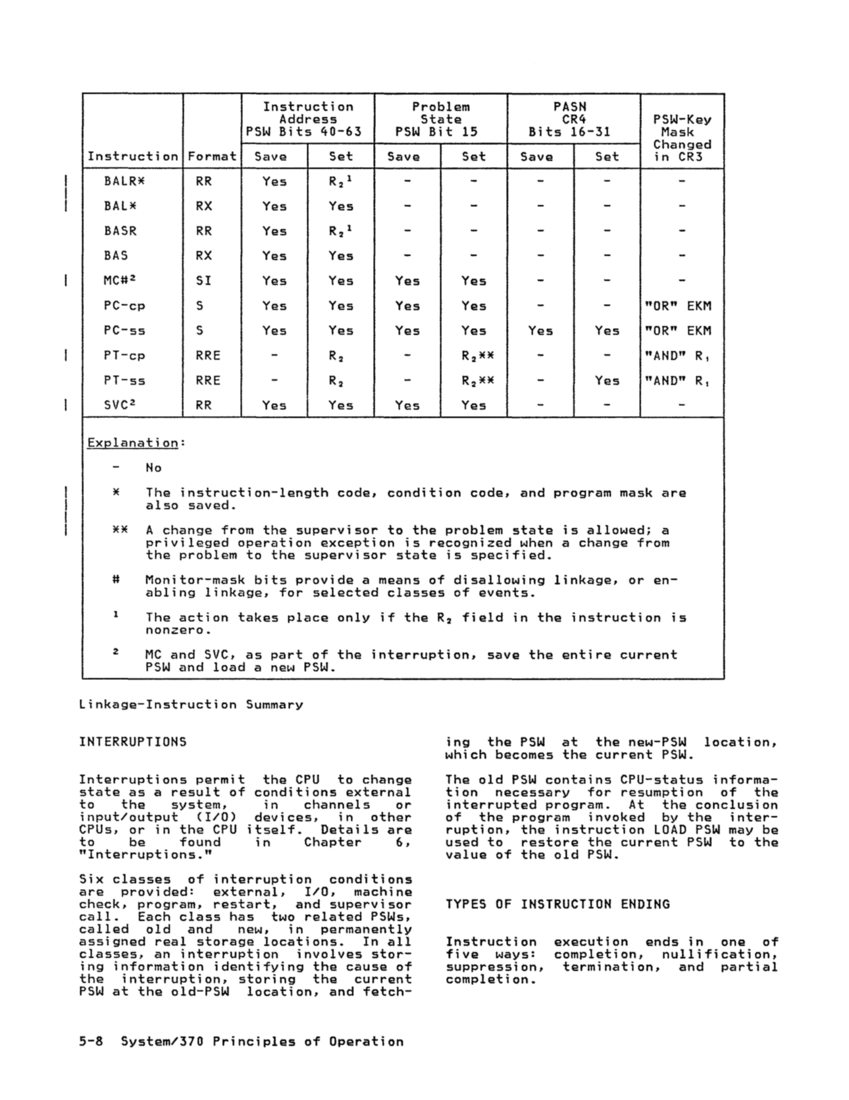the same address space or an address
space different from that of the caller.
In general, it ;s used to transfer
control to a program of higher
authority. PROGRAM TRANSFER permits achange of the instruction address and
address space. PROGRAM TRANSFER also
permits a reduction in PSW-key-mask
authority and a change from the supervi
sor to the problem state. In general,
it is used to transfer control from one
program to another of equal or lower
authority. PROGRAM TRANSFER can be used
to return from a program called by
PROGRAM CALL.
The operation of PROGRAM CALL is
controlled by means of an entry-table
entry, which is locatedas part of a
table-lookup process during the
execution of the instruction. The
instruction causes the primary addressspace to be changed only when the ASN in
the entry-table entry;s nonzero. When
the primary address space;s changed,
the operation ;s called PROGRAM CALL
with space switching (PC-ss). When the
primary addressspace is not changed,
the operation iscalled PROGRAM CALL to
current primary (PC-cp).
PROGRAM TRANSFER specifies the address
space which is to become the new primary
address space. When the primary address
space is changed, the operationis called PROGRAM TRANSFER with space switching (PT-ss). When the primary
address space is not changed, the opera
tion iscalled PROGRAM TRANSFER to
current primary (PT-cp).
The linkage instructions provided and
the functions performed by each are
summarized ;n the figure "Linkage
Instruction Summary."
Chapter 5. Program Execution 5-7
space different from that of the caller.
In general, it ;s used to transfer
control to a program of higher
authority. PROGRAM TRANSFER permits a
address space. PROGRAM TRANSFER also
permits a reduction in PSW-key-mask
authority and a change from the supervi
sor to the problem state. In general,
it is used to transfer control from one
program to another of equal or lower
authority. PROGRAM TRANSFER can be used
to return from a program called by
PROGRAM CALL.
The operation of PROGRAM CALL is
controlled by means of an entry-table
entry, which is located
table-lookup process during the
execution of the instruction. The
instruction causes the primary address
the entry-table entry
the primary address space;s changed,
the operation ;s called PROGRAM CALL
with space switching (PC-ss). When the
primary address
the operation is
current primary (PC-cp).
PROGRAM TRANSFER specifies the address
space which is to become the new primary
address space. When the primary address
space is changed, the operation
address space is not changed, the opera
tion is
current primary (PT-cp).
The linkage instructions provided and
the functions performed by each are
summarized ;n the figure "Linkage
Instruction Summary."
Chapter 5. Program Execution 5-7















































































































































































































































































































































































































































































































































































